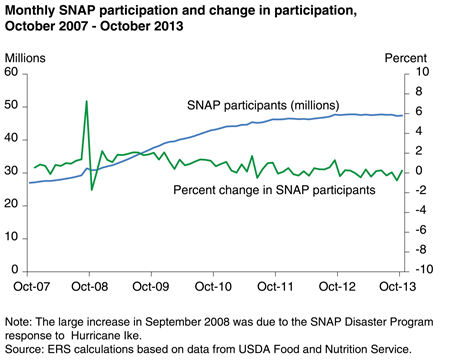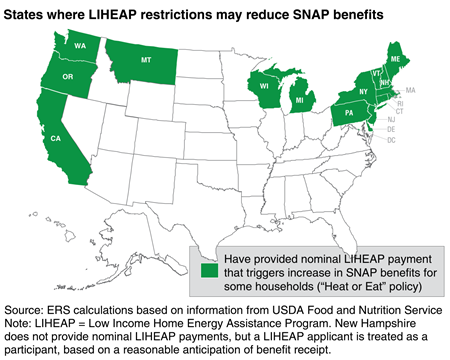
Nutrition
Nutrition: Title IV
Reauthorizes the Supplemental Nutrition Assistance Program (SNAP), the Nation’s largest food and nutrition assistance program, maintaining the program’s basic eligibility guidelines while restricting access to an income deduction that boosted benefits for some households. Provides additional SNAP funding for enhanced employment and training activities, increased healthy food options, and expanded anti-fraud efforts.
Highlights
- Restricts the practice, used in certain States, of providing a nominal energy assistance benefit (Low-Income Home Energy Assistance Program, or LIHEAP) to increase the SNAP benefit levels of some recipients by allowing them to claim a standard deduction for out-of-pocket heating and cooling expenses that they may not actually incur.
- Provides funding to develop and test methods to increase employment of SNAP recipients, and imposes new requirements to evaluate and regularly report on outcomes of State SNAP Employment and Training Programs.
- Increases healthy food options of SNAP participants by requiring a larger variety of food options at authorized retailers and establishing a grant program to provide incentives for the purchase of fruits and vegetables by SNAP recipients.
- Enhances SNAP integrity by using improved information technologies to expand efforts to combat fraud and verify participant eligibility and income.
New Programs and Provisions
Up to 10 States can be selected by USDA to launch SNAP Employment & Training Program pilot projects, designed to increase the employment and earnings of SNAP recipients. The pilot projects are provided a total of $200 million in funding, and are expected to establish and evaluate a range of training and employment strategies in various geographic areas.
The Food Insecurity and Nutrition Incentive grants will provide Federal matching funds to organizations that provide food in communities for projects that encourage SNAP recipients to purchase fruits and vegetables by reducing their cost. The grant program is funded at $100 million over 5 years, with an additional $5 million authorized per year through FY2018.
Funding is provided to expand efforts to prevent SNAP trafficking—the illegal exchange of SNAP benefits for cash. Funding of $15 million is provided in FY2014 for information technologies to prevent trafficking, with an additional $5 million authorized per year through FY2018.
Economic Implications
- SNAP’s eligibility requirements are unchanged. States retain the option, within certain Federal guidelines, to coordinate SNAP eligibility requirements with other safety net programs. Historical evidence suggests that the SNAP expenditures will decline even without stricter eligibility limits, as the caseload contracts in response to improving economic conditions. SNAP monthly caseload growth has slowed steadily since late 2009.
- In 16 States and the District of Columbia, nominal payments (typically $1 to $5 per year) from LIHEAP have been issued to simplify the SNAP requirements for documenting heating and cooling costs, and to trigger additional SNAP benefits for some households. The Congressional Budget Office estimates that the elimination of this practice would reduce the SNAP benefit levels of 850,000 households by an average of $90 per month in the 16 States and the District of Columbia. Elimination of this practice is estimated to reduce SNAP benefits by $8.6 billion over 10 years.



